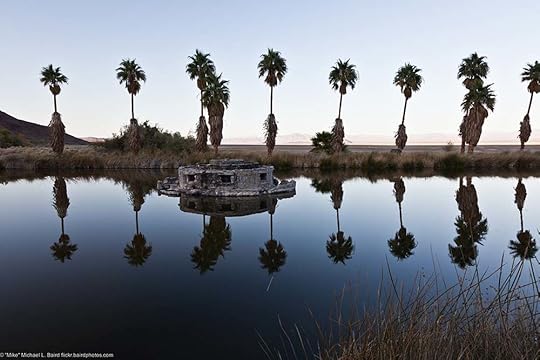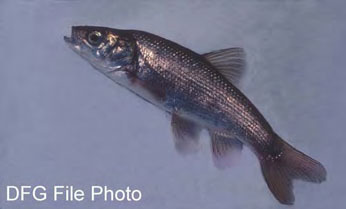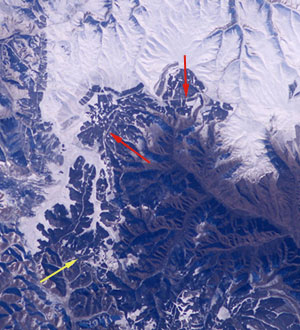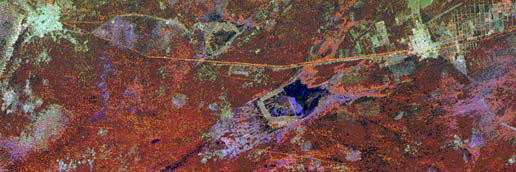Ripley Entertainment Inc.'s Blog, page 366
January 24, 2018
Frank Hayes: The Dead Man Who Won a Horse Race
Featured in Ripley's Believe It or Not!

Winning usually comes with a lot of pomp and circumstance, but not so much for Frank Hayes who won a horse race despite being dead.
On June 4, 1923, the 35-year-old jockey was competing in a steeplechase at New York’s Belmont Park. A horse trainer and long-time stableman, Hayes had never won a race before and no one expected him to take the first spot that day while riding a 20-1 outsider named Sweet Kiss, a horse owned by Miss A.M. Frayling.
The odds didn’t seem to bother Hayes. What did seem to bother him was his heart.
Sometime during the race, the Hayes suffered a heart attack and died instantly. However, he didn’t fall off of his horse. In fact, he remained in the saddle for the rest of the race and actually crossed the finish line first, winning by a head.
Despite the fact that he had died at some point while still on the track, no one was aware that anything had gone wrong until Miss Frayling and the officials went to congratulate Hayes, only to find out he was no longer alive.

Sweet Kiss of Death
While the unfortunate incident could have been caused by a number of conditions, various theories floated around regarding the reason for the jockey’s heart attack, one which figured that the mere excitement of the race may have been too much for Hayes to handle and another which suggested that the rider’s recent weight loss (dropping from 142 pounds to 130 pounds in a very short time in order to qualify for the race) had contributed to the strain on his heart.
Despite being a winner, the horse Hayes rode never raced again and Sweet Kiss was nicknamed “Sweet Kiss of Death” for the rest of her life.
By Desirée O, contributor for Ripleys.com
CARTOON 01-24-2018
January 23, 2018
Zzyzx: The Town Invented by a Professional Quack
Featured in Ripley's Believe It or Not!

Not much is known about Curtis Howe Springer’s early life. We know he was born in 1896, but whether he ever attended college, taught boxing in World War I, or underwent medical training of any kind is up in the air.
Springer gave himself whatever degree seemed appropriate depending on who he was talking to—or what he was selling. M.D., Ph.D., N.D., he claimed to have them all, despite no record anywhere confirming he had graduated.

He eventually landed a radio gig, pontificating a brand of vaguely Christian pseudo-science, complete with testimonials for his self-made “medicines”.
Springer claimed his cures didn’t just cure you medically, but spiritually as well. This led to him building a health spa in the Mojave Desert.
Zzyzx Mineral Springs and Health Spa
Though he filed for mining rights to an area dubbed Soda Springs, he had no intentions of mining the 12,800 acres he asked for. He also never got those rights.
Instead, he installed massive heat-pump systems under the natural springs there, creating his own hot springs. He built a hotel, and proclaimed his newfound desert oasis “Zzyzx,” marketing it as the “last word in health.” The cross-shaped pools were advertised to have special healing properties for the mind and body. He also sold a number of rejuvenating concoctions for ridiculous prices.

CC Mike Baird via Flickr
The names and descriptions were suspect at best, with products like F-W-O described as “Food delightfully pleasing to women.” Mo-hair was obviously for you to grow more hair, but products like antideluvian crystals were anyone’s guess.
Zy-crystals, salt from the oasis, had very specific instructions:
“To hasten results, breathe deeply, get at least eight hours of uninterrupted sleep in twenty-four, exercise in moderation and think only clean and constructive thoughts. Also, drink one pint of water one hour before each meal, none at mealtime or for two hours thereafter; none before retiring.”
All of which is great advice for getting a good night’s sleep, but really doesn’t require huffing some over-priced salt.

CC Mike Baird via Flickr
Shutdown
Eventually, the government caught wind of the squatter who had built a healing facility in the desert. He was removed and convicted of false advertising, serving a 49-day sentence in jail.
The remnants of his spa remained in the desert, however, and can be seen by tourists off Interstate 15.
The land is now controlled by the Bureau of Land Management, and the crazy antics of Springer may have had one positive consequence. He had stocked his springs with the Mohave tui chub—a rare desert fish. The species has died out in most other places, making the site a protected sanctuary for their conservation.

CARTOON 01-23-2018
January 22, 2018
Ripley’s Guide to Weird Rides Around the World
Featured in Ripley's Believe It or Not!

Amusement parks can sometimes look the same, sharing many of the same basic rides. Many include roller coasters, scenic tours of the park, drop rides, and merry-go-rounds. However, there are some rides that are rarely found repeated elsewhere and we have for you the weirdest rides around the world.
Sky Cycle
First up, the Sky Cycle Ride in the Brazilian Park Washuzan Highland in Japan. What got this ride on the list of Ripley’s weirdest rides? From the ground level, it’s about four stories up, but one look at the video tells you this isn’t your standard strapped-in tightly type of ride. The only thing keeping you from that four-story fall is a seat belt. The bike itself doesn’t seem like a safe cage to protect you from weather or other interferences. Also, what makes this ride stand out is that you must peddle your way around the track yourself. The bonus of all of this effort though are the views of the Seto Ohashi Bridge—no bumpin, please!
The Shard
Up next on World’s Weirdest Rides, is a one of a kind virtual reality experience at The View from the Shard, the tallest building in Western Europe. These virtual rides leaves people screaming for joy all while staying safely inside. The first virtual reality ride is the Slide. You are sent down an imaginary slide at 100mph, all while strapped in a chair. The next virtual reality ride at the Shard is Vertigo. The building falls away from you and all you are left with is the skeleton of the building you walk across balance beams at 800 feet in the air. If you have a fear of heights, you’ll likely want to skip this one.

Human Trebuchet
Next up is a ride guaranteed to make you question the thought behind it. It’s the Human Trebuchet of the Middlemoor Water Park. The idea behind this ride is that it launches you into the air up to 75 feet so you can land safely into a perfectly positioned net. Unfortunately, this idea didn’t turn out as expected. In 2002, it resulted in a tragic death when someone missed the target.
Vertical Swing
Next up on the list, is a swing ride. Normally a tame ride, something about this one stands out above the rest. The Vertical Swing in the Wunderland Kalkar takes you about 17 stories up. The amusement park is based out of Germany and was originally supposed to be a nuclear power plant. What makes this ride stand out is that it’s inside of the cooling tower.
Vanishing Coaster
The next one on the list is based out of Japan and this one is amazing. It’s the Vanishing Roller Coaster in their Yokohama Cosmo World at the Wonder Amuse Zone. The roller coaster takes a dive into a lake of water. While you aren’t actually plunging into water, the effect is incredible. You end up coming out on the other side of course but chalk this one up for one of the weirdest ones so far.
Death Simulator
The next one on the list is one for the books and finishes off our list of weirdest rides around the world. At the Window of the World theme park in Shenzhen, China, they have a 4D Death Simulator. Spine-tingling enough for you? You are put in a coffin—sounds promising already—and you get pushed into a furnace by an attendant. This knocks out a few of greatest fears—death, cramped spaces—out of the way. You feel the heat of the ride as it gets up to a toasty 104 degrees Fahrenheit (40 Degrees Celsius). The ride is safe, technically, but I’m sure is guaranteed to leave you spooked for a very long time.
As you plan on your next vacation, make sure you catch some of these bizarre, one of a kind attractions you likely won’t find anywhere else.
By Nicole Pyles, contributor for Ripleys.com.
CARTOON 01-22-2018
January 21, 2018
CARTOON 01-21-2018
January 20, 2018
CARTOON 01-20-2018
January 19, 2018
Largest Key Lime Pie Weighs Over 1,000 Pounds
Featured in Ripley's Believe It or Not!

[January 14-20th, 2017] An absolutely huge pie, thermometer-breaking temperatures, and a Klingon embassy opens in Sweden.
Too Cold for Mercury
The public thermometer in Siberia’s Oymyakon village has malfunctioned in the face of historic cold temperatures. As temperatures dropped to -62 ˚C (-79˚ F), townspeople noticed the display was stuck. Meanwhile, temperatures dropped another five degrees in the coming days.
A post shared by Сивцева (@sivtseva9452) on Jan 14, 2018 at 4:36am PST
Klingon Embassy
A tourist center for the fictional Klingon race is planned to open in Stockholm. Made famous by their antagonistic role in the Star Trek franchise, the “aliens” will be welcoming tourists. Four Klingon ambassadors—Ban’Shee, Mara, Morath, and Klag—will teach culture and give authentic martial arts reenactments before dining with guests on Gagh and blood wine.
Cantina Pencil
The “Cantina Theme” from Star Wars: A New Hope has become world-famous since 1977, remixed into thousands of different variations. Dani Ochoa, a 19-year-old college student has, quite possibly, made the most unique version yet. She came up with a math equation, which—when written—plays the song.
Car Crashes into 2nd Story
A car jumped the median las weekend but went much higher than police normally see. It flew into the second story of a dental office. The driver walked away fine, but it took heavy construction equipment to remove the vehicle.
A car crashed into the second story of a building in Santa Ana, California, this morning. Officials say the vehicle hit the road’s center divider and went airborne.
Photos via Orange County PIO pic.twitter.com/8BwQe3srNa
— NBC News (@NBCNews) January 14, 2018
Largest Key Lime Pie
The Key Lime Pie Company based in Cocoa Beach, Florida, made a key lime pie that weighed over 1,000 pounds! The pie was so large, that a metal-working shop had to construct a custom pie-pan to support the 12 ¼-foot dessert.
NASA confirms: You Can’t See the Great Wall of China from Space
Featured in Ripley's Believe It or Not!

Or Not
In today’s world many misconceptions have been perpetuated—becoming modern day “facts”—when, in reality, myths and hearsay have taken over. Sorry to burst your bubble, but in this weekly column, Ripley’s puts those delusions to the test, turning your world upside down, because you can’t always…Believe It!
Today: The Great Wall of China is not visible from space.
Space Myth
Since 1904, people have been claiming that the Great Wall of China is so big and so prominent, that it can be seen from the surface of the moon. After 65 years of waiting, Apollo astronauts were able to confirm the authenticity of this claim. Their answer: no.

Robert Ripley at the Great Wall in 1933.
Alan Bean, of the Apollo 12 mission, recounts that all you can really make out on the Earth are lots of white clouds and snow, some blue patches, a little bit of yellow, and—every once in a while—a patch of green.
“No man-made object is visible at this scale.”—Alan Bean, Apollo 12 astronaut.
A Closer Look
The Chinese space program was shaken to learn that their own astronaut, Yang Liwei couldn’t see the wall from space. This at least confirmed the invisibility wasn’t a political conspiracy.
After numerous missions to space, by astronauts from countries all over the world, nobody could see the wall. The International Space Station, which is 238,601 miles closer to the Earth than the Moon, or only 0.1% as far away, still offers no view of the Wall with the naked eye.

The Great Wall of China from space. Can you see it? From: NASA
Finally Photographed
It was Chinese-American astronaut Leroy Chiao who would eventually spot the wall using a camera and 180 mm lens. Even then, he could only identify a small portion of it. The human eye is often compared to having a roughly 50 mm field of view, meaning that the 180 mm lens far surpassed human capability.

Yeah, that’s obviously it, right? From: NASA
Chiao took another photograph using a 400 mm lens, and experts were even less sure that he had taken a photo of the actual wall. Favorable snowfall and sunlight had seemed to be largely responsible for photographing the wall the first time.
NASA also confirms the Great Wall is nearly impossible to photograph using conventional means, but says low-orbit satellites can capture it using radar.

The long orange line is the wall. From: NASA
Source: NASA confirms: You Can’t See the Great Wall of China from Space
Ripley Entertainment Inc.'s Blog
- Ripley Entertainment Inc.'s profile
- 52 followers








